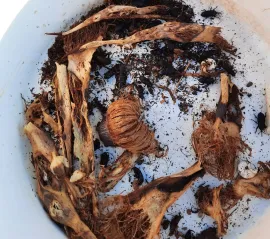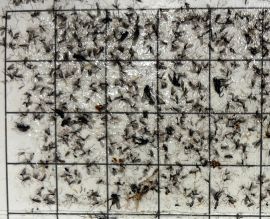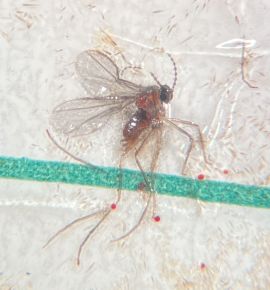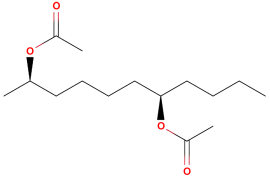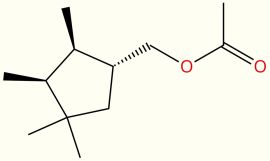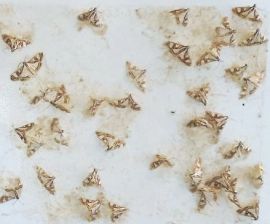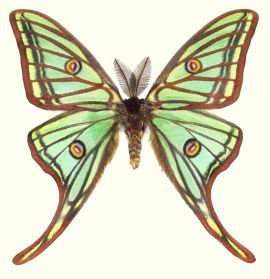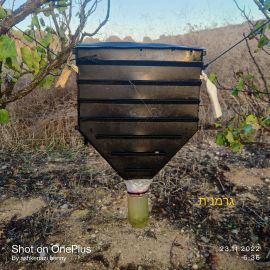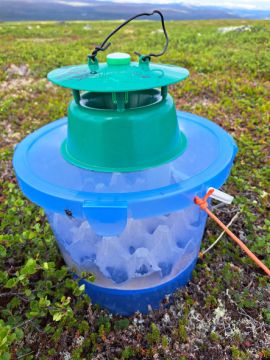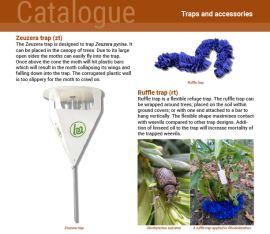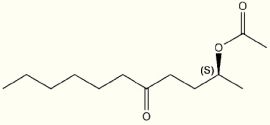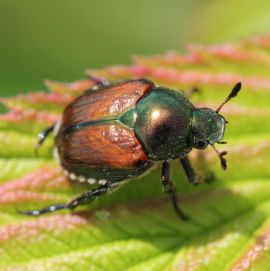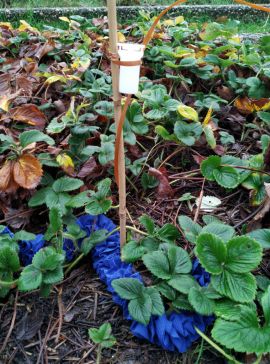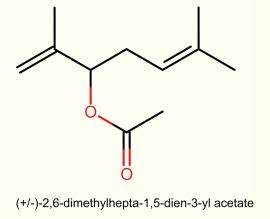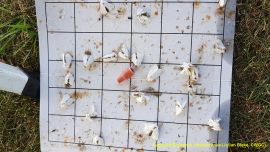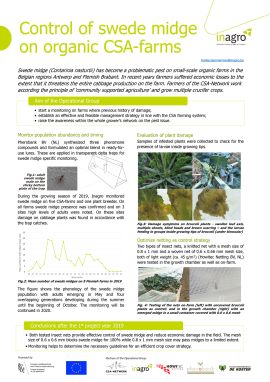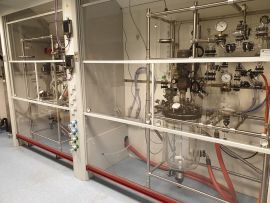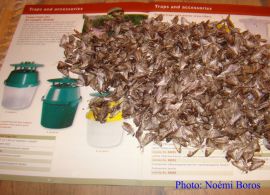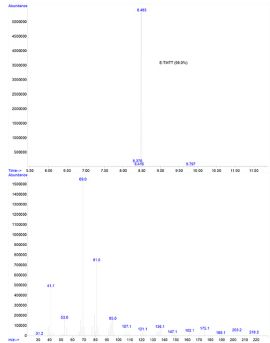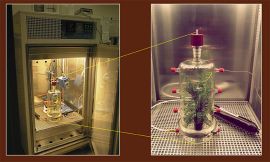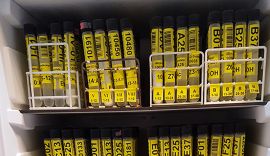News
Available Pherobank pheromone lure for Cylas puncticollis and Cylas brunneus
Nesidiocoris tenuis is a predatory mirid bug commonly used in integrated pest management (IPM) for controlling whiteflies, aphids, and lepidopteran eggs, particularly in tomato and other solanaceous crops.
Read more … Available Pherobank pheromone lure for Cylas puncticollis and Cylas brunneus
Newly available Pherobank Omnilure for Nesidiocoris tenuis
Nesidiocoris tenuis is a predatory mirid bug commonly used in integrated pest management (IPM) for controlling whiteflies, aphids, and lepidopteran eggs, particularly in tomato and other solanaceous crops.
Read more … Newly available Pherobank Omnilure for Nesidiocoris tenuis
Newly available Pherobank Omnilure for Scyphophorus acupunctatus
Scyphophorus acupunctatus, commonly known as the agave weevil, is a beetle native to Central and North America that has become an invasive species in various parts of the world.
Read more … Newly available Pherobank Omnilure for Scyphophorus acupunctatus
Newly available Pherobank product, pheromone lure for Mayetiola destructor
Traps baited with (8Z)-13S-acetoxy-8-heptadecen-2-one were demonstrated to attract large numbers of midges. Delta traps and funnel traps are both suitable to trap this insect.
Read more … Newly available Pherobank product, pheromone lure for Mayetiola destructor
Newly available Pherobank product, pheromone lure for Dasineura mali
Traps baited with (8Z)-13S-acetoxy-8-heptadecen-2-one were demonstrated to attract large numbers of midges. Delta traps and funnel traps are both suitable to trap this insect.
Read more … Newly available Pherobank product, pheromone lure for Dasineura mali
Newly available Pherobank product, pheromone lure for Contarinia pyrivora
Traps baited with (2R,7R)-2,7-diacetoxyundecane were demonstrated to provide a sensitive and accurate means of monitoring the short and often intense emergence period of adult Contarinia pyrivora midges in trials in The Netherlands, Belgium, Italy and France.
Read more … Newly available Pherobank product, pheromone lure for Contarinia pyrivora
Newly available Pherobank product, pheromone lure for Pseudococcus viburni
Pseudococcus viburni is a cosmopolitan species which is thought to originate from South America. Due to some taxonomic confusion, both its origin and geographical distribution remain difficult to establish with certainty.
Read more … Newly available Pherobank product, pheromone lure for Pseudococcus viburni
Newly available Pherobank product, pheromone lure for Diaphania pyloalis
Mulberry is the only host for rearing silkworms (Bombyx mori) and is important as a shade tree in cities.
Read more … Newly available Pherobank product, pheromone lure for Diaphania pyloalis
Newly available Pherobank product, pheromone lure for Actias isabellae
The protected moth Graellsia isabellae (Graells 1849) (Lepidoptera: Saturniidae) is one of the most emblematic European insects. Because of its large size, attractive wing patterns, and restricted geographical distribution, it has become a symbol for several entomological and conservation organizations.
Read more … Newly available Pherobank product, pheromone lure for Actias isabellae
Newly available Pherobank product, pheromone lure for Scolytus amygdali
The almond bark beetle, Scolytus amygdali, is a pest of cultivated species of stone (Prunus) and pome (Malus) fruits in the Mediterranean region and Southern Europe. Today populations of this beetle in Israel have reached high densities.
Read more … Newly available Pherobank product, pheromone lure for Scolytus amygdali
Newly available Pherobank products, pheromone lures for Syngrapha parilis and for Sympistis lapponica
In a joint effort with Markus P. Rantala1 to formulate a new attractant for Polia species, interestingly one of the pheromone mixtures was found to attract large numbers of Syngrapha parilis and another large numbers of Sympistis lapponica.
New pdf catalogue and flyers available
Please visit this page for the updated Pherobank catalogue and product flyers.
Newly available Pherobank product, pheromone lure for Oiketicus kirbyi
Our chemists have synthesized the pheromone and ready-for-use lures are now available from Pherobank.
Read more … Newly available Pherobank product, pheromone lure for Oiketicus kirbyi
Newly available Pherobank product, pheromone lure for Resseliella theobaldi
Our chemists have now synthesized the pheromone and ready-for-use lures are available from Pherobank.
Read more … Newly available Pherobank product, pheromone lure for Resseliella theobaldi
Available Pherobank product, pheromone lure for Popillia japonica
This pheromone formulated in ready-for-use lures is available from Pherobank.
Read more … Available Pherobank product, pheromone lure for Popillia japonica
New attractant formulation for Thrips
Omnilure thrips is a controlled release dispenser with a potent attractant to attract several species of thrips towards blue or yellow sticky cards.
Newly available Pherobank products, lure and trap for the Black vine weevil Otiorhynchus sulcatus
This kairomone formulated in ready-for-use lures and the Ruffle traps are now available from Pherobank.
Newly available Pherobank product, pheromone lure for Pseudococcus comstocki
This pheromone formulated in ready-for-use lures is now available from Pherobank.
Read more … Newly available Pherobank product, pheromone lure for Pseudococcus comstocki
Customer satisfaction survey
In October 2020 Pherobank has conducted a satisfaction survey among its customers.
Het feromoon van de Bastaardsatijnvlinder beschikbaar
Chemici van Pherobank zijn er in geslaagd om het feromoon te produceren van de bastaardsatijnvlinder (Euproctis chrysorrhoea).
Read more … Het feromoon van de Bastaardsatijnvlinder beschikbaar
Successful monitoring of the swede midge (Contarinia nasturtii)
Successful monitoring of the swede midge (Contarinia nasturtii)
Read more … Successful monitoring of the swede midge (Contarinia nasturtii)
Newly available Pherobank products, pheromone lure for Stenoma catenifer
Pheromone lures for the avocado seed moth, Stenoma catenifer are now available from Pherobank
Read more … Newly available Pherobank products, pheromone lure for Stenoma catenifer
Pherobank increases production capacity insect pheromones
Pherobank is a pheromone producer particularly focussed to the 'non-standard' pheromones.
Read more … Pherobank increases production capacity insect pheromones
Newly available Pherobank products, pheromone lure for Contarinia nasturtii
Pheromone lures for the Swede midge, Contarinia nasturtii.
Read more … Newly available Pherobank products, pheromone lure for Contarinia nasturtii
Newly available Pherobank products: pheromone lure for Pseudococcus longispinus
Pheromone lures for the long-tailed mealybug are now available from Pherobank.
Read more … Newly available Pherobank products: pheromone lure for Pseudococcus longispinus
α-copaene available from Pherobank BV
The sesquiterpene (-)-α-copaene has been isolated by careful distillation from Manuka oil.
High purity cis-vaccenyl acetate available from Pherobank BV
The chemical name for the title compound is (Z)-11-octadecenyl acetate, however, it is better known by its common name cis-vaccenyl acetate. cis-Vaccenyl acetate is a volatile chemical compound that acts as a pheromone in Drosophila and at least one species of longhorn beetle.
Read more … High purity cis-vaccenyl acetate available from Pherobank BV
Newly available Pherobank products
Chemists of Pherobank have recently synthesised the pheromones for two Euproctis moth species, namely Euproctis chrysorrhoea and Euproctis pseudoconspersa.
Pheromone lures and traps for The Box Tree moth Cydalima perspectalis available from Pherobank
The box tree moth, Cydalima perspectalis, is native to East Asia. It was first recorded in Europe in 2007, in southwest Germany and The Netherlands.
Homosesquiterpene alarm volatile (E,E)-4,8,12-trimethyl-1,3,7,11-tridecatetraene (E-TMTT) available from Pherobank BV
After the unusual acyclic C11 homoterpene (E)-DMNT, Pherobank has synthesised the C16 homosesquiterpene (E)-TMTT {(E,E)-4,8,12-trimethyl-1,3,7,11-tridecatetraene} as well.
Rare plant alarm volatile (E)-4,8-Dimethyl-1,3,7-nonatriene (E-DMNT) available from Pherobank BV
The unusual acyclic C11 homoterpene (E)-4,8-Dimethyl-1,3,7-nonatriene is emitted by many plants as a response to herbivore attack.
Custom-made lures based on client’s specifications
Pherobank also develops, produces, and formulates top-quality pheromone products. In addition, custom-made lures can be produced based on the client’s specifications.
Read more … Custom-made lures based on client’s specifications




